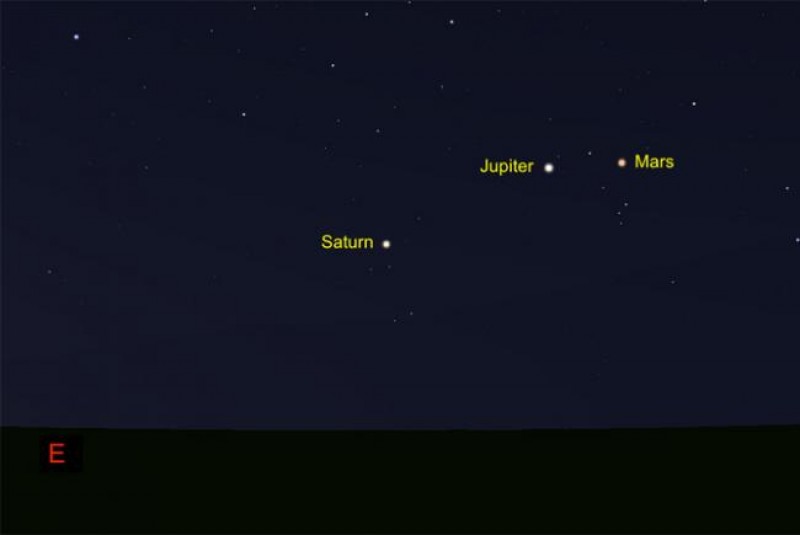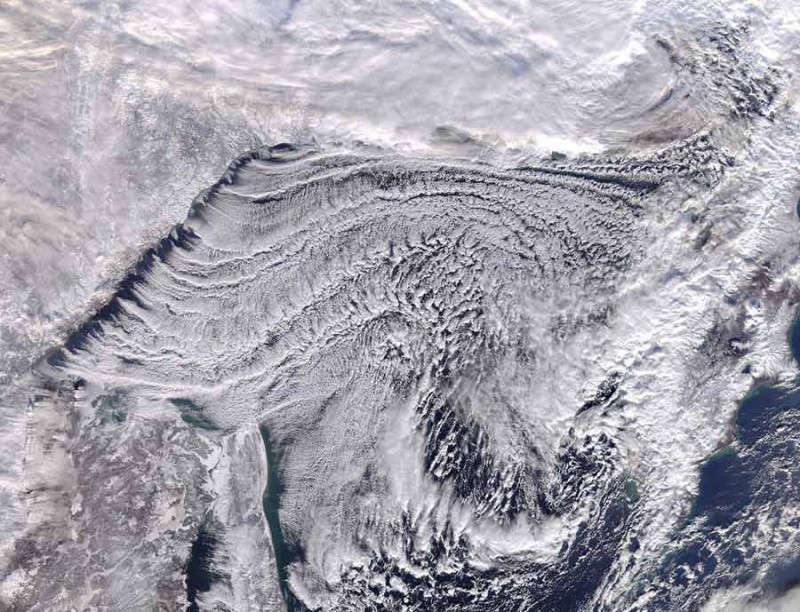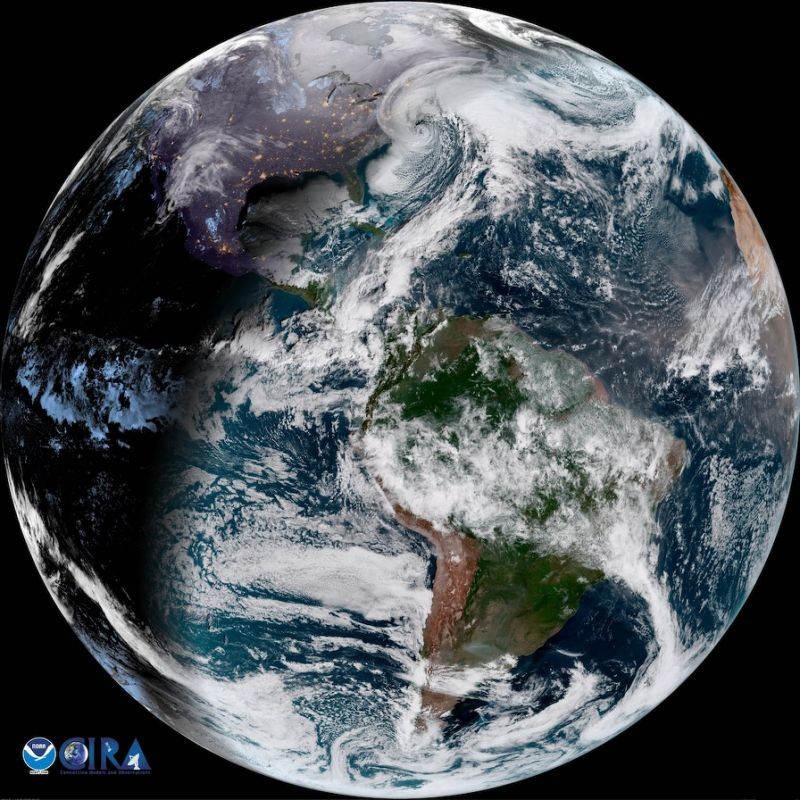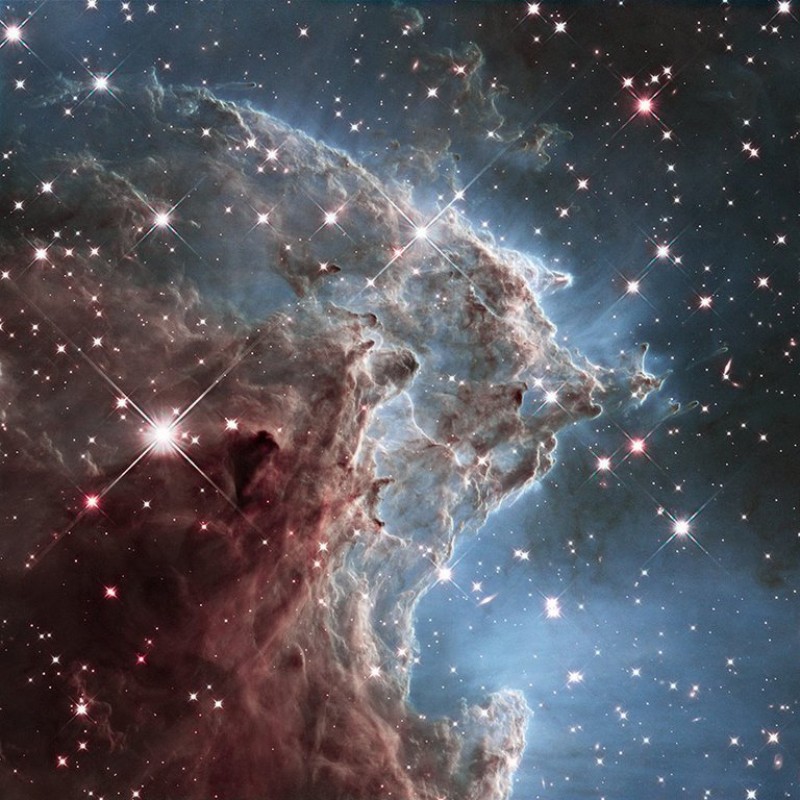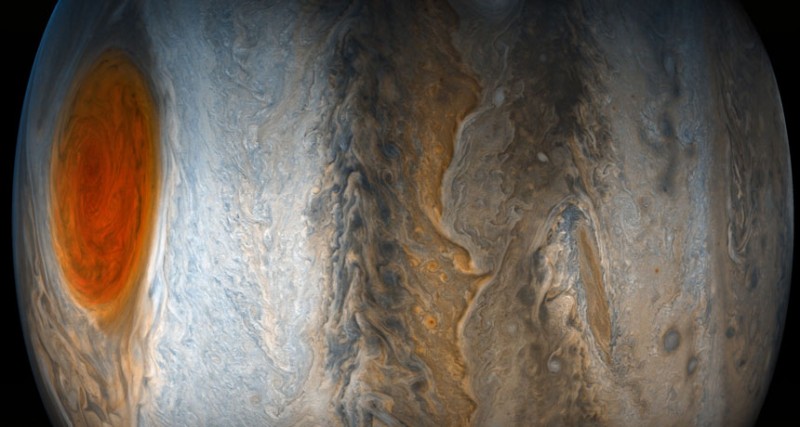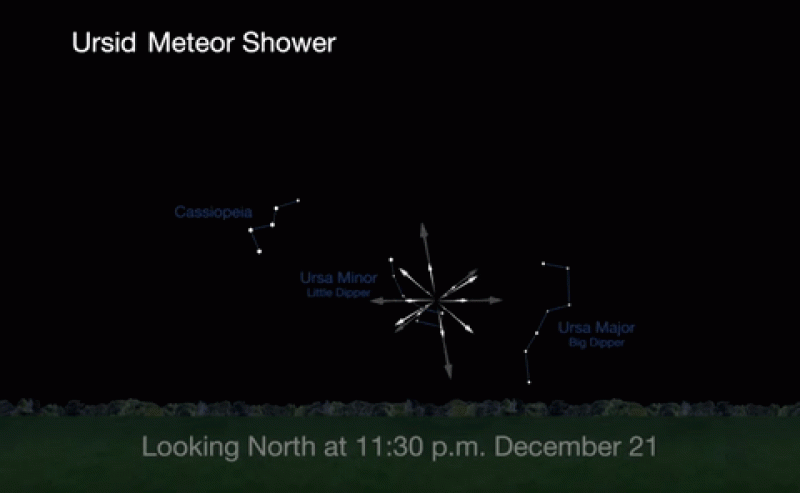Blog
See Mars, Jupiter Get Together Before Dawn This Month
Monday, January 8th 2018 11:49 PM
For observers in the Americas, Mars and Jupiter will come extremely close together in the southeastern sky, on the mornings of Jan. 6 and 7.
Credit: SkySafari App
It is sometimes difficult to rouse oneself out of a warm bed in the predawn hours to get a view of some celestial event, and that's especially true now with such bitter-cold temperatures enveloping much of the country. But it will be worth braving the frigid outdoors early on Sunday (Jan. 7) morning to get a view of two planets that will be engaged in a very close conjunction.
Mars and Jupiter are like two ships passing in the January night — or more precisely on the edge of the January dawn. At the break of dawn, you will find them more than one-quarter of the way up from the southeast horizon to the point directly overhead (the zenith), separated by less than two-tenths of a degree. Jupiter is enormously brighter than Mars — 191 times brighter to be exact — with...
Read More
Read More
Our new flagship equatorial mount !
Saturday, January 6th 2018 09:45 PM
CEM 120 center balance equatorial mount
Two new high payload capacity equatorial mounts !It's been a long time coming, but the next step in the "center balance" design revolution is here, introducing the CEM120 equatorial mount. The new high payload CEM series mounts were created in response to the growing demand for an accurate, stable equatorial mount with the versatility to carry larger instruments and complex imaging arrays. The mount offers the benefits of our revolutionary "center balance" design: stability, accuracy, and smooth mechanical operation with a large payload capacity of 115 lbs, (52kg). The natural ability of the center balance design is due to its focusing its payloads weight directly over the center of its pier or tripod. The CEM120's performance is demonstrated by its low +/- 3.5 arcsecond periodic error, which is further reduced to <0.15 arcsecond RMS in the CEM120EC model. Additionally, the CEM120 features an advanced cable man...
Read More
Read More
Solving Earth's Climate Challenges Require More Satellite Vision: Report
Saturday, January 6th 2018 08:54 PM
The Moderate Resolution Imaging Spectroradiometer (MODIS) aboard NASA's Terra satellite acquired a true-color image of frigid air blowing over the Sea of Okhotsk on Nov. 25, 2017.
Credit: NASA
Space observations are crucial to solving the challenges presented by Earth's complex climate, which will play a pivotal role in humanity's success or demise, argued an extensive report by the U.S. National Academies.
The new, 700-page report released today (Jan. 5) is titled "Thriving on Our Changing Planet: A Decadal Strategy for Earth Observation from Space." In it, the National Academies of Sciences, Engineering and Medicine (NASEM) announced their recommendations for what federal research agencies — such as NASA, the National Oceanic and Atmospheric Administration (NOAA), and the United States Geological Survey (USGS) — should do over the next 10 years. This was the second decadal survey for Earth science and applications from space; the first was published in 20...
Read More
Read More
Did You Know That Only 313 Stars Have Officially Approved Names?
Thursday, January 4th 2018 10:17 PM
This colorful and star-studded view of the Milky Way galaxy was captured when the Hubble Space Telescope pointed its cameras towards the constellation of Sagittarius (The Archer). Blue stars can be seen scattered across the frame, set against a distant backdrop of red-hued cosmic companions. This blue litter most likely formed at the same time from the same collapsing molecular cloud. The color of a star can reveal many of its secrets. Shades of red indicate a star much cooler than the Sun, so either at the end of its life, or much less massive. These lower mass stars are called red dwarfs and are thought to be the most common type of star within the Milky Way. Similarly, brilliant blue hues indicate hot, young, or massive stars, many times the mass of the Sun. A star's mass decides its fate -- more massive stars burn brightly over a short lifespan and die young after only tens of millions of years. Stars like the Sun typically have more sedentary lifestyles and live longer, burning...
Read More
Read More
'Bomb Cyclone' Swirls Across US East Coast in a Stunning Views of Earth
Thursday, January 4th 2018 10:11 PM
As a powerful bomb cyclone winter storm curls across the U.S. East Coasttoday (Jan. 4), the National Oceanic and Atmospheric Administration's (NOAA) GOES-East satellite is snapping stunning images of the Earth's surface.
The NOAA satellite, which launched in 2016 (referred to as GOES-R and GOES-16 before and after launch), is intended to give forecasters their best-ever views of storms and severe weather affecting the globe. The satellite's views have been updating online here as the storm progresses.[See the 'Bomb Cyclone' in These NASA and NOAA Gifs]
This full-disk view of Earth from the GOES-East satellite shows a storm swirling over a darkened United States Jan. 4, 2018 at 8:30 a.m. EST (1330 GMT).
Credit: NOAA
A bomb cyclone occurs when a weather system's atmospheric pressure drops incredibly rapidly, causing it to quickly increase in strength and whipping up hurricane-level winds and often heavy snow over a broad ar...
Read More
Read More
The science behind kids’ belief in Santa
Tuesday, December 26th 2017 11:48 PM
Over the past week, my little girls have seen Santa in real life at least three times (though only one encounter was close enough to whisper “yo-yo” in his ear). You’d think that this Santa saturation might make them doubt that each one was the real deal. For one thing, they looked quite different. Brewery Santa’s beard was a joke, while Christmas-tree-lighting Santa’s beard was legit. Add to that variations in outfits and jolliness levels.
But as I delved into the Santa-related research, I found I was wrong to think his omnipresence might throw my kids off. It turns out that the more kids see real, live Santa Clauses, the more likely they are to think he’s real. More exposure actually tracked with stronger belief, scientists reported in Cognitive Development in 2016.
That got me wondering about this belief. Like many parents, I feel a little hint of unease when it comes to telling my trusting, innocent children a lie. But lots...
Read More
Read More
What is Astrophysics?
Tuesday, December 26th 2017 08:49 PM
Astrophysics is a branch of space science that applies the laws of physics and chemistry to explain the birth, life and death of stars, planets, galaxies, nebulae and other objects in the universe. It has two sibling sciences, astronomy and cosmology, and the lines between them blur.
In the most rigid sense:
Astronomy measures positions, luminosities, motions and other characteristics
Astrophysics creates physical theories of small to medium-size structures in the universe
Cosmology does this for the largest structures, and the universe as a whole.
In practice, the three professions form a tight-knit family. Ask for the position of a nebula or what kind of light it emits, and the astronomer might answer first. Ask what the nebula is made of and how it formed and the astrophysicist will pipe up. Ask how the data fit with the formation of the universe, and the cosmologist would probably jump in. But watch out — for any of these questions, two or three may sta...
Read More
Read More
NASA's Juno Probes the Depths of Jupiter's Great Red Spot
Monday, December 18th 2017 09:56 PM
Data collected by NASA's Juno spacecraft during its first pass over Jupiter's Great Red Spot in July 2017 indicates that this iconic feature penetrates well below the clouds. Other revelations from the mission include that Jupiter has two previously uncharted radiation zones."One of the most basic questions about Jupiter's Great Red Spot is: how deep are the roots?" said Scott Bolton, Juno's principal investigator from the Southwest Research Institute in San Antonio. "Juno data indicate that the solar system's most famous storm is almost one-and-a-half Earths wide, and has roots that penetrate about 200 miles (300 kilometers) into the planet's atmosphere."The science instrument responsible for this in-depth revelation was Juno's Microwave Radiometer (MWR). "Juno's Microwave Radiometer has the unique capability to peer deep below Jupiter's clouds," said Michael Janssen, Juno co-investigator from NASA's Jet Propulsion Laboratory in Pasadena, California. "It is proving to be an excellent...
Read More
Read More
Ursid Meteor Shower 2017: When, Where & How to See It This Month
Thursday, December 14th 2017 11:26 PM
The Ursids produce a handful of meteors or shooting stars every hour, usually in the range of five to 10 per hour. While it's one of the lesser showers of the year, in 2017 skywatchers will be treated to only a crescent moon around sunset, making it easy to see the meteors in dark skies.
The 2017 Ursid meteor shower will peak overnight on Dec. 22 and Dec. 23. According to Jane Houston Jones at NASA's Jet Propulsion Laboratory in California, stargazers should expect only 10 meteors per hour this year.
In some past years, the meteors have been more spectacular — in 1945 and 1986, for instance, 50 per hour were observed — but experts say that such events are rare.
"They're about average," NASA meteor expert Bill Cooke told Space.com. "The Ursids are not noted for fireballs, like the Geminids and the Perseids [are]. You will need a dark sky to see them."
The Ursids have a sharp peak on the morning of Dec. 22, meaning that observers will see many...
Read More
Read More
